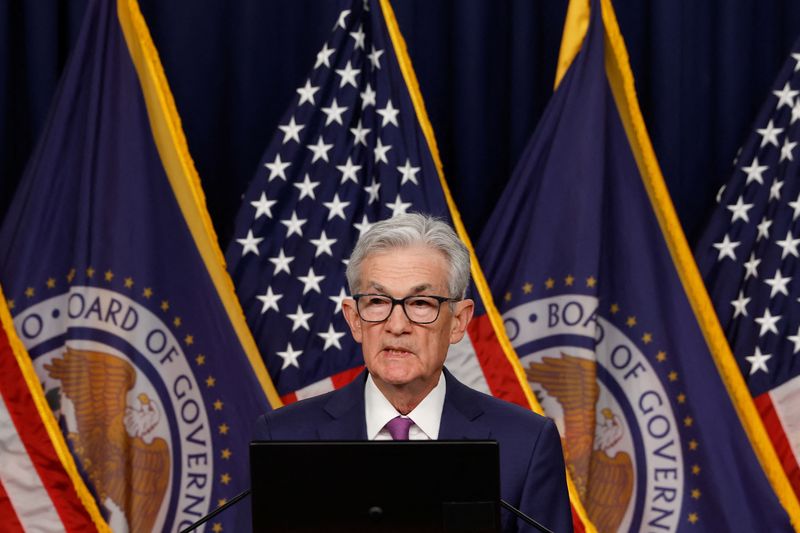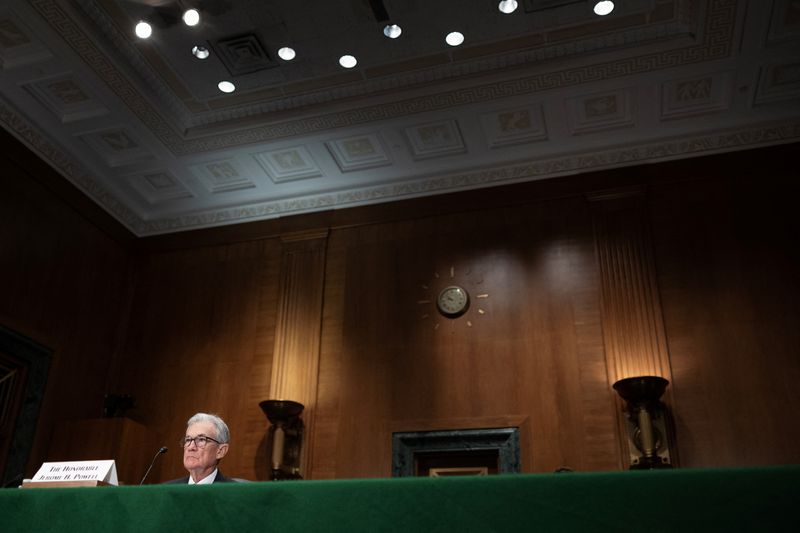By Prerana Bhat and Indradip Ghosh
BENGALURU (Reuters) - The U.S. Federal Reserve will cut its key interest rate in June, according to a stronger majority of economists in the latest Reuters poll, as the central bank waits for more data to confirm whether inflation is headed convincingly toward its 2% target.
The survey also showed respondents saw it more likely that if Fed policymakers change their rate projections at the March 19-20 meeting the median view would signal fewer cuts this year, not more.
In his latest testimony to the Congress, Fed Chair Jerome Powell reiterated policy easing would likely be "appropriate" at some point this year. But still-sticky inflation and a very resilient labor market could prevent an early rate cut.
After a brief period of betting the first cut would come in March, and then shifting bets to May, financial market traders are more in line with comments from Fed officials, with rate futures also now priced for a first rate reduction in June.
Unlike pricing in markets, most economists in Reuters surveys since September have been consistently forecasting a cut around the middle of 2024 and have grown even more convinced in the latest survey.
While all 108 economists in the latest Reuters March 5-11 poll predicted the fed funds rate to stay in a 5.25%-5.50% range next week, a two-thirds majority, 72, said the first rate cut would come in June, compared to just over half in February.
Seventeen said May and 19 said July or later.
Around 85% of respondents to an additional question, 45 of 54, said the bigger risk was the first rate cut comes later than they expect rather than earlier.
"The Fed is seeking 'greater confidence' on inflation before it starts normalizing its policy stance. We expect progress on inflation in coming months will give the Fed enough confidence to begin a gradual cutting cycle in June," said Michael Gapen, chief U.S. economist at Bank of America.
"A more forward-looking Fed might put more weight on low inflation expectations and cut sooner, but this Fed is data dependent and wants to avoid backtracking after it starts."
Despite personal consumption expenditure (PCE) inflation falling to 2.4% in January from its peak of around 7.0% in June 2022, policymakers have said they are waiting for more confidence inflation is moving sustainably to the Fed's 2% target. In testimony last week, Powell said "we're not far from it."
PCE inflation, the Fed's preferred gauge, was forecast to average 2.2% this year and 2.0% in 2025 and 2026, according to the poll. But other inflation measures - the consumer price index (CPI), core CPI, and core PCE - were still seen above target at least until 2026.
The world's largest economy was predicted to expand at an average 2.1% this year, above what Fed officials regard as the non-inflationary growth rate of around 1.8%, suggesting the Fed would not be in a rush to cut rates fast.
While there was no clear consensus on the magnitude of rate cuts this year, nearly 50% of respondents, 52 of 108, saw three-quarter percentage points of easing or less, including 43 who matched December's median dot plot projection of 75 basis points of cuts.
Asked what was the bigger risk if the Federal Open Market Committee's dot plot projection changes next week, an overwhelming majority, 38 of 44, said it would predict fewer cuts this year. Only six said more.
"It only takes two dots moving higher to shift the median from 75 bps of cuts to 50 bps of cuts. A stronger-than-expected inflation report would increase the risk of an upward revision to the 2024 median dot," said Andrew Hollenhorst, chief U.S. economist at Citi.

"But given more hawkish Fed officials are already above the median and Powell's desire to preserve consensus, we think the most likely case is the 2024 median stays put signaling 75 bps of cuts this year."
(For other stories from the Reuters global economic poll:)
